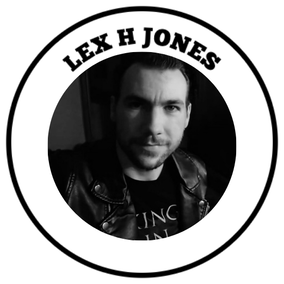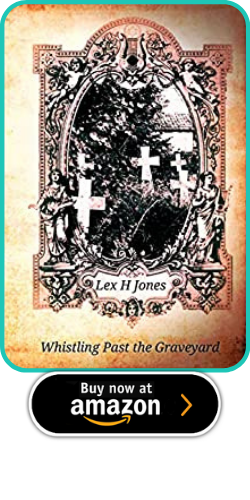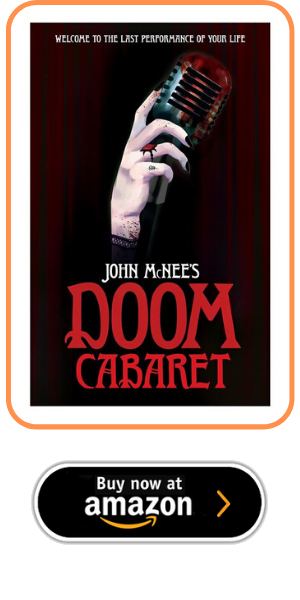|
From Steve Rudzinski, director of the low-budget cult hit CarousHELL, comes a ludicrous new horror project- Shingles: The Movie. Shingles is a series of comedy horror novels that delight in their tongue-in-cheek grossness, and the authors are currently campaigning to bring five of these tales to the big screen in a unique horror anthology. With stories such as Put Your Hand in My Ass and Zombies Ate My Homework, the movie promises to bring laughs, action and gore to the table in a format reminiscent of classic cheesy horror anthologies such as The Willies and Creepshow. With established horror and comedy writers such as Drew Hayes, Robert Bevan, Rick Gualtieri and John G Hartness putting their weight behind the project, they’re hoping to use indie power to make their yucky little nightmare a reality. Crowd funder Link https://www.indiegogo.com/projects/shingles-the-movie#/ A funny thing happened in the 1950s. An insidious enemy grew from within the heart of America, spreading out and infecting all it touched. Neighbour turned on neighbour, beloved celebrities were now the enemy and not to be trusted for the things they said. No this wasn’t an early version of Covid. This was McCarthyism. An paranoid-fulled horror whereby everyone was suspected of being a Red Spy, a Commie in disguise, leading to a period of American history so bleak that it’s been likened to the Witch Trials a couple of centuries earlier. One of the consequences of this newfound mentality of ‘seeing enemies everywhere’, was the inevitable and always awful book burning. Not just figurative, but literal. Actual piles of ‘unAmerican literature’ were burned in the streets. And the removal of such ‘threats’ went further than burning the existing pages. Like a boss monster from Resident Evil, this paranoia mutated into the worst and most horrific form imaginable: legislation. Comic Books, the subject of this article (I’m getting there, I promise) were hit particularly hard by the new rules. Given their primary audience of such easily-influenced young minds, they were forbidden from depicting anything Un-American, such as the bad guys winning or extreme violence. Given that we’re talking about America here, just take a moment to share an Edna Krabapple-style ‘HA’ at that last statement. As you might expect, the inability to depict violence affected everything from Crime comics, to Sci Fi, to Superheroes. This is the era when Batman became a campy silly character rather than a brutal vigilante. But arguably hit worst of all, were horror comics. For some reason, the idea of beings returning from the dead to enact revenge, was judged as UnAmerican. This was most likely because it’s judged as being Un-Christian, which is odd given that returning from the dead is exactly what their main guy does. But in any case, the inability to depict such things as vampires, zombies, mummies, ghosts or anything or the sort basically did what bullets and fire had always failed to: it killed the monsters. Horror comics weren’t just being burned in the streets, they couldn’t even be published anymore. This change also meant that not only could publishers not release titles that were solely dedicated to the tales of such things, but they couldn’t even be featured in other kinds of comics. You weren’t likely to see Superman fighting any vampires, for instance. That all changed in the 1970s. The introduction of the Comics Code Authority had been the face behind which these impossible restrictions had hidden. Over time, this unduly-harsh legislature was relaxed repeatedly, allowing more and more things to slip through. Eventually it was decided that comics could once again feature Monsters and violence and the good guys not winning. And regarding the first point there, the comic books of the 1970s took that news and ran with it. There’s so many full-on horror comics from the 1970s that it’s too many to list. Marvel had its Tomb of Darkness, the return of Journey Into Mystery (now a full-on horror title in itself having previously been fantasy-based, and even being the title that gave birth to Thor) and more. DC had House of Mystery, Ghosts and several others. Then there were the outliers from smaller companies, such as Boris Karloff’s Tales of Mystery, and Ripley’s Believe it Or Not. I’ve got a massive stack of all of these and more, and they’re an absolute treasure trove of horror tales. But the sudden horror invasion didn’t stop there. Oh no, it started to creep into the ‘nicer neighbourhoods’. I mean, of course you were going to get supernatural beings in graveyards and haunted houses, but in the 1970s you were about to encounter them in the centre of New York, or Gotham City. Michael Morbius bares the oft-disputed (and even when researching this article, I found conflicting statements about this) honour of being the first vampire in comic books since the relaxation of the dreaded code. And where did he appear? On the pages of a horror comic, right? Nope. He was introduced in Spider-Man. That’s right, not even Dr Strange. Marvel’s first vampire character would face off first of all against the friendly neighbourhood Spider-Man. If that seems an add choice, I should add the context that in the 1970s, Spider-Man was used to introduce a whole gamut of new characters. Got a new villain to try out? Put him up against Spidey. New hero? Have him work alongside Spidey. There’s a whole title called Marvel Team-Up, in which every issue is basically one of the above scenarios. So whilst having Spidey fight a vampire might seem odd, it perhaps seems less so given this context. Morbius himself was an unusual vampire, in that his origin was scientific. Ultimately he was still pale, strong, had a need to drink blood, an eastern-European accent, and was vulnerable to sunlight. But he wasn’t afraid of the cross or holy water, and his vulnerability to garlic was explained scientifically rather than being a spiritual thing. These technicalities of his origin did make him fit a little more in the colourful world of Spider-Man than you might expect, at least in his early appearances. Morbius’ popularity was such that, as the years rolled on, he’d get his own title (several of them, as they never seemed to last particularly long. Some folks are just better as support acts, I guess), and become part of the early 90s ‘Midnight Sons’ series, which was when Marvel brought together all of its darker supernatural characters in what was basically the Goth Avengers. Morbius is actually the subject of a new movie starring Jared Leto, which looks fun enough from the trailer, but I suspect it will be overshadowed by more tales of pretentious douchebag behaviour from Mr Leto off-camera. Hot on the heels of Morbius, Marvel introduced a whole pantheon of horror characters that were much more in the line of ‘classic’ monsters. We had Dracula, Frankenstein, Zombie, The Mummy, Werewolf By Night, and others. If Morbius’s introduction had perhaps suggested that ‘real’ vampires don’t exist in the Marvel Universe, then the Tomb of Dracula title put this idea back in its coffin pretty damn quickly. Here we had the actual lord of vampires doing…..lord of vampires stuff. To be honest the quality of his title varies a lot, even from issue to issue. It’s usually either him battling another vampire who wants his title, fighting another monster, forcibly interacting with the human world (and very occasionally, actual superheroes), or else being hunted by vampire killers. An example of the latter saw the introduction of a group called the NightStalkers. These were a group of well-trained vampire hunters who each had their own reasons for stalking the undead (not in a Bella Swan way). Perhaps most famous in this group, was a young chap named Blade. If you’re picturing the comic-book equivalent of Wesley Snipes – long leather coat, sunglasses, fangs and one-liners……you’re way off. Well, not with the one-liners. But the Blade we now know and love was a later development. In his original appearances, Blade had an afro, wore flares and a tanned suede jacket, and didn’t even have any powers. His origin (his mum was bitten by a vampire when she was pregnant with him) had only served to give him an immunity to vampire bites and mesmerism, and a vague ability to sense when they were close to the undead. Which aided with hunting them, naturally. But that was it. There was none of this ‘all of the strengths and none of the weaknesses’ DayWalker stuff. That came later. Some sources suggest that was introduced specifically for the films, but I don’t think that’s true as the Midnight Sons stuff featured Blade before the first film came out, and here he was much closer to the super-powered version we know. At the time of writing this, a new Blade film is in pre-production to bring the character into the actual MCU canon of films, so it’ll be interesting to see how that pans out. As mentioned above, Dracula wasn’t the only classic monster to make his way into the Marvel Universe. We also had the Frankenstein Monster, The Mummy and even a Zombie. The stories featuring all of them were mediocre. There’s a reason Tomb of Dracula stuck around for years and they didn’t. Despite the oft-times ropey nature of Dracula’s stories, he managed to plant himself firmly in the Marvel world, becoming an important part of the darker side of that world’s mythology. The other ‘classic’ monsters didn’t fare quite so well. Perhaps the runner-up to Dracula was WereWolf by Night. The protagonist here was a young man named Jack Russell (apparently the writers who created him swear to this day that this name wasn’t intentionally meant to be a canine name) didn’t become a werewolf by the usual manner of being bitten, however. No, he was the bearer of a family curse that began on his 18th birthday. Long ago, one of his ancestors had messed around with a cursed book called the Darkhold (basically Marvel’s Necronomicon, and now making appearances in the MCU itself) and subsequently given his bloodline a case of the hairies. What made the Werewolf stories stand out to me, is that there was actual collateral damage from Jack’s transformations. More than once he killed or maimed actual friends and family members, and the fallout from that stuck. One of his closest friends spends the rest of his life in a wheelchair after an encounter with the werewolf, for instance, and Jack has to live with that. That was some heavy stuff for 1970s comic books. Sadly, ultimately they gave Jack the ability to control himself when he becomes a werewolf, leading to him being like any other superhero, and things went downhill from there (it’s very telling that his title was cancelled not long after this change.) Whilst we’re still on Marvel, it’d be wrong to ignore the character who is arguably their most famous horror icon: Ghost Rider. Originally a stunt rider who made a deal with the Devil and found himself bonded with a vengeance-seeking demon, the Rider would later become an angel, an interdimensional warrior, and even a cosmic alien herald of Galactus.. All of which was just….ugh. But what do you expect; Marvel gonna Marvel. But if you want to read the proper Ghost Rider, it’s the original 1970s tales you want. Cursed and lonely Jonny Blaze, travelling down route 66(6), fighting demons and ghostly truckers and the like. Whilst both attempts at making a Ghost Rider film were pretty bad, there’s some imagery from the first one which is really great. And the more recent version of him that appeared on Marvel’s Shield series was very cool (although that was Robbie Reyes and not Johnny Blaze, but they did reference Blaze.) Moving away from the cities and highways and into the more rural side of America, the 1970s found not one but two swamp monsters. Like The Heap from the 1950s, these guys were big, slimy and strong, yet actually served the forces of light. Marvel had the Man-Thing, and DC had Swamp Thing. The latter was introduced in House of Secrets as a one-shot horror story character, but his popularity was such that they brought him back for a full title. Well, sort of. You see that original story had Swamp Thing as being set over a century ago, which didn’t let him fit with the current DC universe. So they re-wrote his origin to fit in the modern day instead. Interestingly, a later Swamp Thing story by Alan Moore introduced the idea that Swamp Things were like Slayers in the world of Buffy, in that there was one per generation. This now meant the original Victorian-era Swamp Thing was allowed to exist in the history of the DC world, which was a nice workaround. Both Man-Thing and Swamp thing would deal with a variety of mystical and supernatural threats, human misunderstanding and abuse, and occasionally encounters with actual superheroes. And both would go on to be part of some larger destiny. Swamp Thing became the god of the Green, the protector of the natural world. And Man-Thing would become the guardian of the Nexus of Reality, basically an interdimensional hotel lobby in the centre of the swamp with doors opening and closing to all sorts of place. Some nice, mostly not. Both of these characters have also had movies made, a common thread here, but none have been great. Swamp Thing did have a high-budget TV series made a couple of years back, which was promising, but sadly it got cancelled. This makes the experience of watching it rather annoying, because everything you see is a plot thread that will be set up and never resolved. Finally, let’s talk about Batman. I don’t think a day goes by that I don’t talk about Batman, so it would be rude to miss him out here. When the Comics Code Authority relaxed a little, allowing violence back into comics, one of the first characters to take advantage of this was Batman. It must have upset him, not being able to punch anybody for so long. The writers at DC clearly wanted to make Batman a dark character again, surrounded by shadows and fear. But they weren’t quite sure how to do that. Frank Miller’s reinvigoration of the character as the gritty one we know today was a decade away, so what to do in the meantime? The answer, as it is to many things in life, was monsters. If you pick up a run of Batman comics from the 1970s, you’d absolutely be forgiven for being surprised at how many damn monsters there are in them. Most notably, this era saw the introduction of Man-Bat, a scientist-turned giant bat monster. As with Morbius over at Marvel, this character would become so popular that he’d go on to get his own series, be it short-lived. The years rolled on and Man-Bat fell out of a favour a little, meaning we don’t see him all that much in the modern era, but he remains an iconic example of the time when Batman fought monsters of the literal kind. He wasn’t alone, though. Batman also faced off against Yetis, Undead creatures, and even a demonically-possessed and seemingly-immortal Adolph Hitler (yes really). Unlike the previous characters I’ve talked about, no, none of this has made it to screen yet. Although I personally think a 1970s-set Batman movie featuring supernatural threats would be a fun change of pace for the franchise, I can’t see it happening. So there we have it. The 1970s reopened the cemetery gates onto the worlds of comic books, and they’ve never quite closed again. If you’re interested in reading any of the titles I’ve spoken about above, but don’t want to spend an absolute fortune on 50-year-old comics, may I suggest looking up the collected editions that both companies now put out in book form? Marvel’s ‘Epic Collection’ series, for instance, will give you around 10-15 comic books for less than £20, which is far less than it would cost you to buy the original comics themselves. Lex H Jones Lex H Jones is a British author, horror fan and rock music enthusiast who lives in Sheffield, North England. He has written articles for premier horror websites the ‘Gingernuts of Horror’ and the ‘Horrifically Horrifying Horror Blog’, and appeared on multiple podcasts covering various subjects such as books, films, videogames and music. Lex’s first novel ‘Nick and Abe’, a literary fantasy about God and the Devil spending a year on earth as mortal men, was published in 2016. This was followed in 2019 by noir crime novel ‘The Other Side of the Mirror’ and illustrated children’s weird fiction book ‘The Old One and The Sea’. His latest release is a collection of ghost stories, ‘Whistling Past The Graveyard’. Lex also has a growing number of short horror stories published in collections alongside some of the greats of the genre, and in 2020 he co-created the comic strip series ‘The Anti-Climactic Adventures of Detective Vampire’ with Liam ‘Pais’ Hill. When not working on his own writing Lex also contributes to the proofing and editing process for other authors. His official Facebook page is: www.facebook.com/LexHJones Amazon author page: https://www.amazon.co.uk/Lex-H-Jones/e/B008HSH9BA https://www.amazon.com/Lex-H-Jones/e/B008HSH9BA/ref=dp_byline_cont_book_1 Twitter: @LexHJones Whistling Past the Graveyard |
Archives
April 2023
|







![[FEATURE] CHILDHOOD FEARS BY CASEY J RUDKIN](../../uploads/3/4/5/1/34519054/feature-childhood-fears-by-casey-j-rudkin_orig.jpg)















 RSS Feed
RSS Feed

